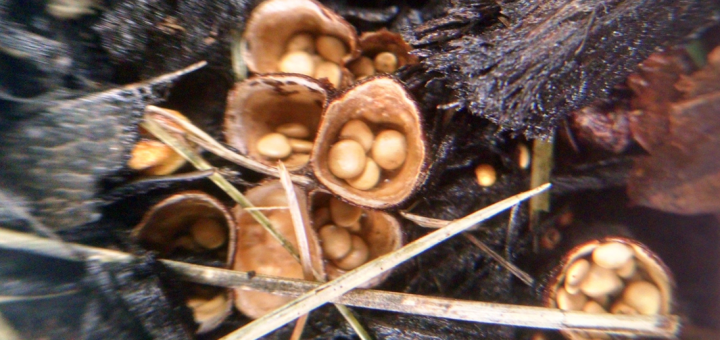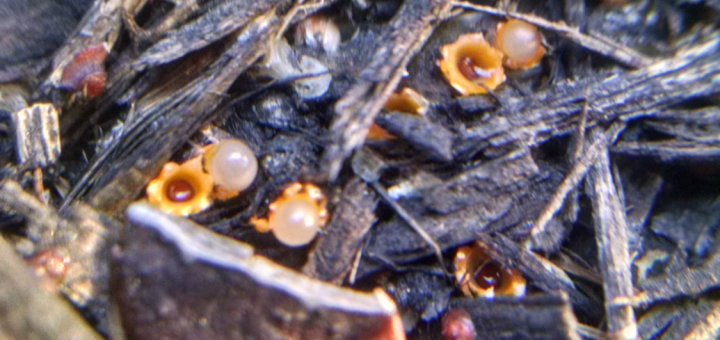#213: Crucibulum laeve
Bird’s nest mushrooms are some of my favorite mushrooms to show people when introducing them to the amazingly diverse world of mushrooms. The fact that there are tiny mushrooms that look like a bird’s nest still stuns me. The two most common bird’s nest mushrooms that I find are Cyathus striatus (FFF#147) and Crucibulum laeve. C. striatus is larger and more likely to be seen, but C. laeve is probably more common. C. laeve is most visible when young; in that stage it has a yellow to orange membrane sealing the top of the nest that makes it easy to spot on brown mulch, twigs, and other small pieces of wood. Once you find it, the mushroom is easy to identify; C. laeve is the only North American bird’s nest mushroom with white eggs and a yellow nest.









![#011: Characteristics of Kingdom Fungi [Archived]](https://www.fungusfactfriday.com/wp-content/themes/hueman/assets/front/img/thumb-small-empty.png)
